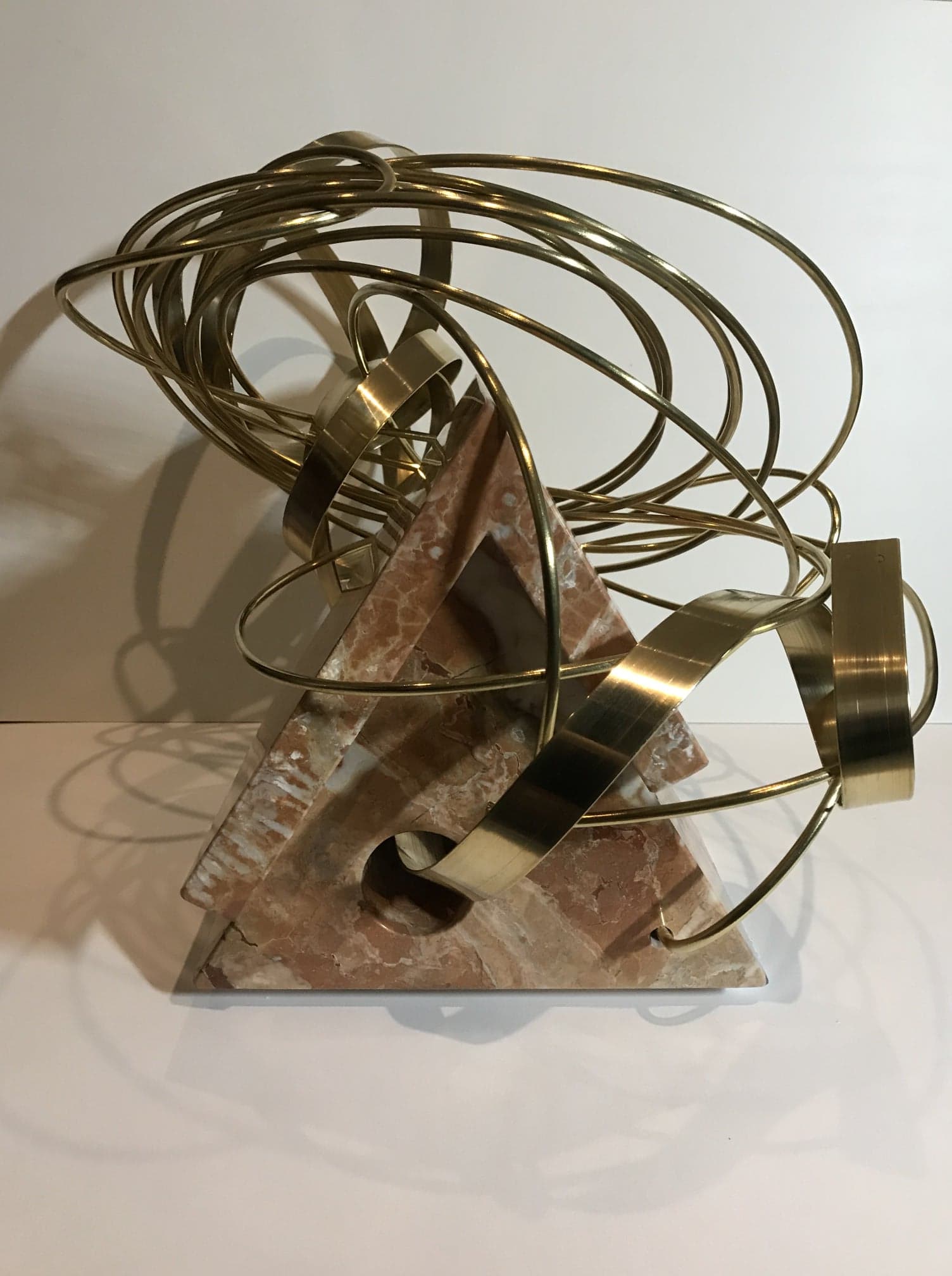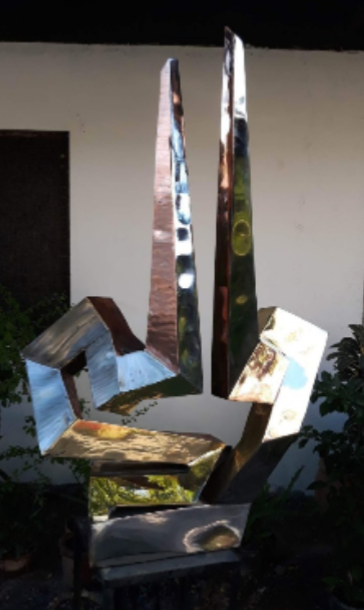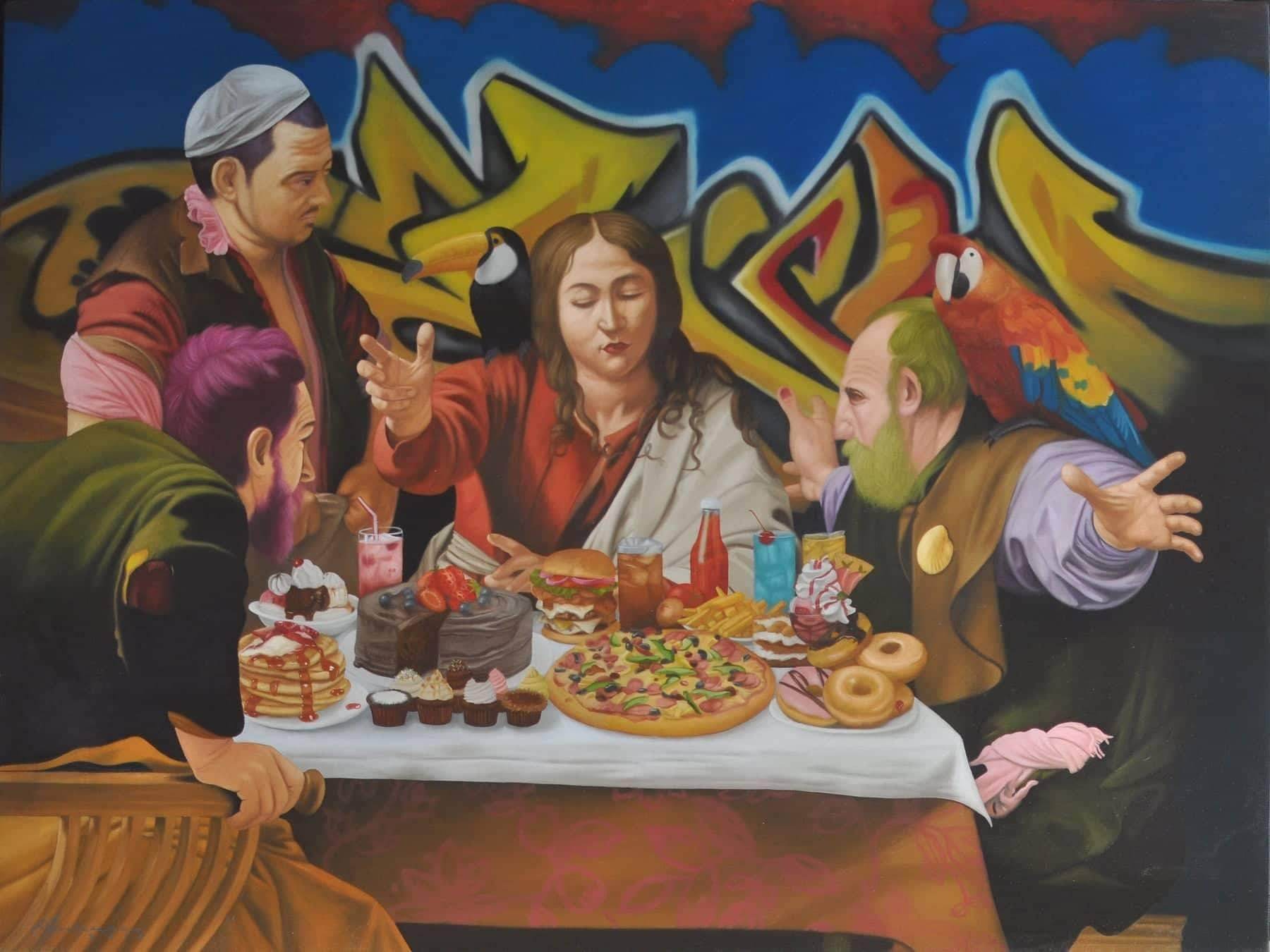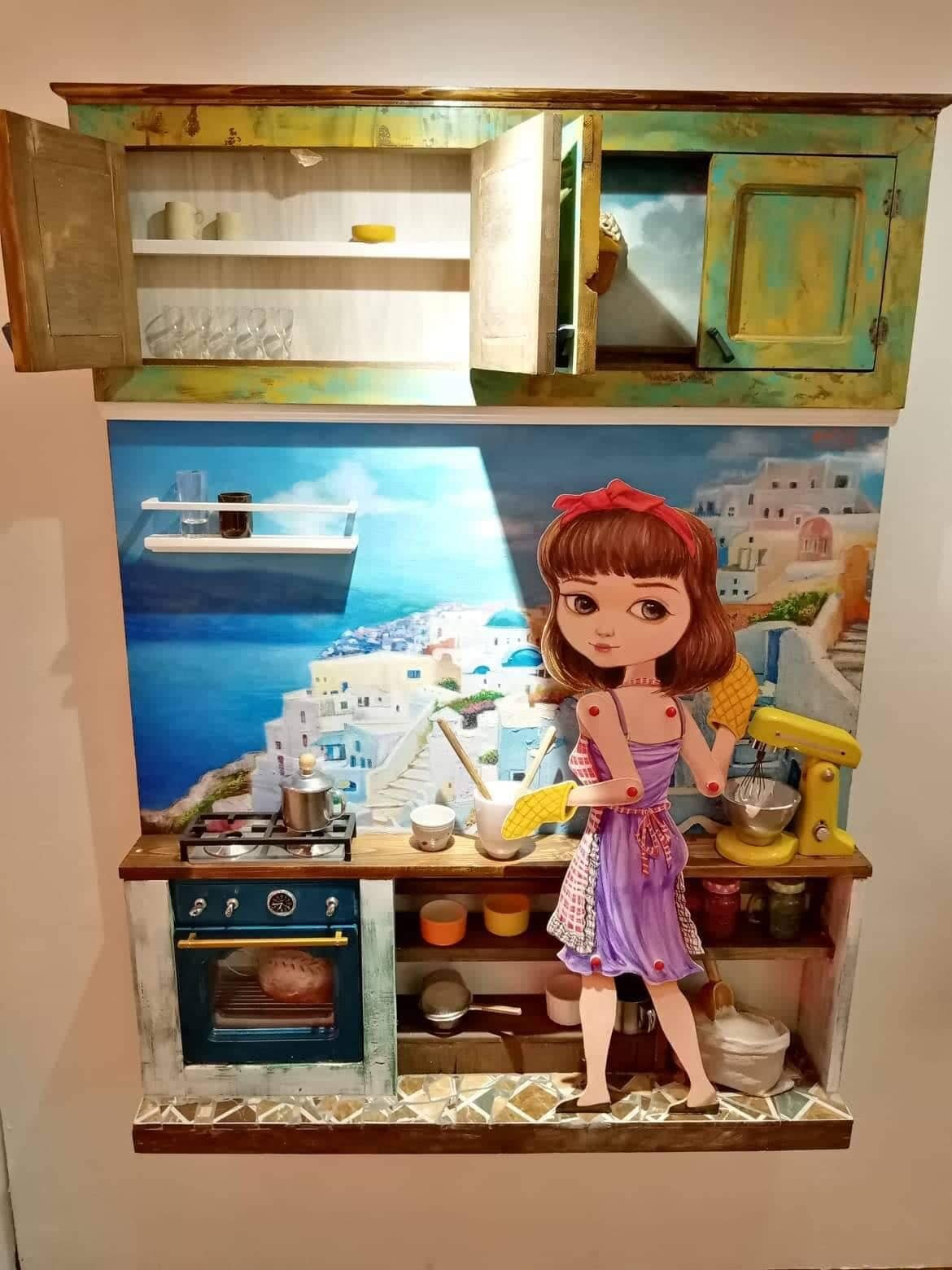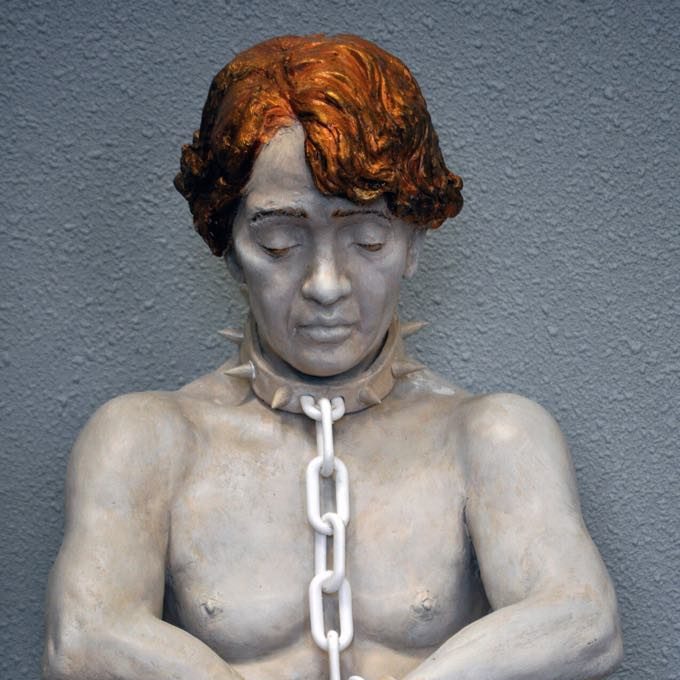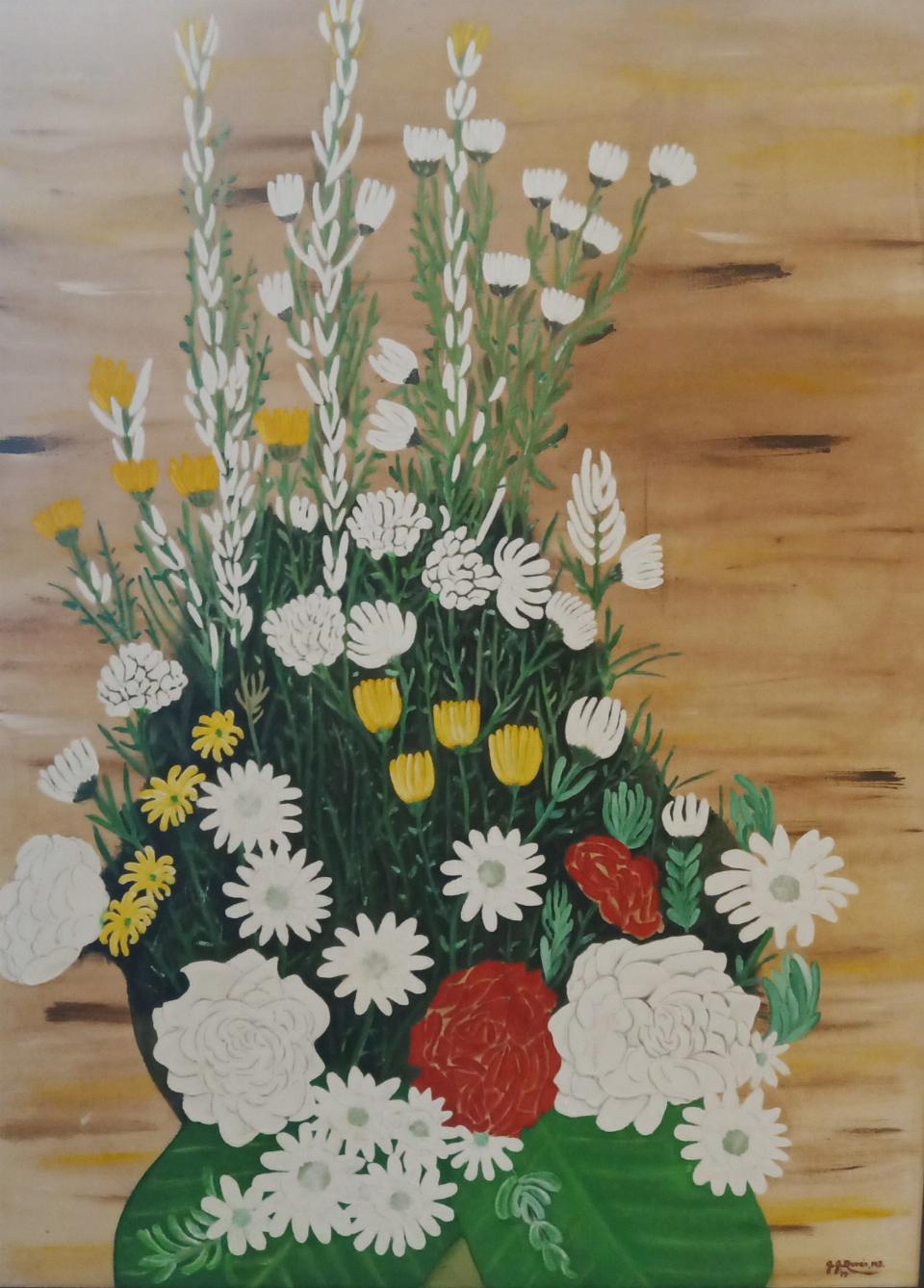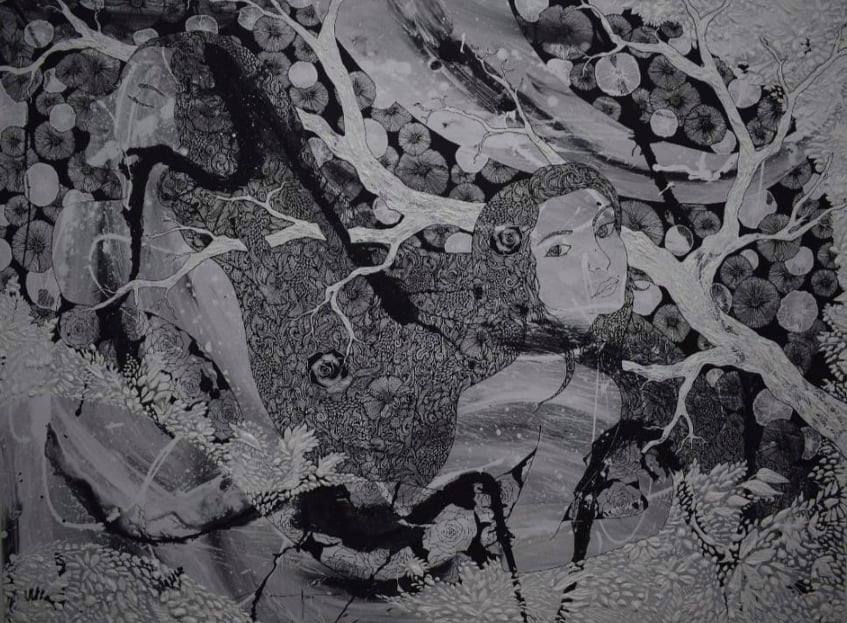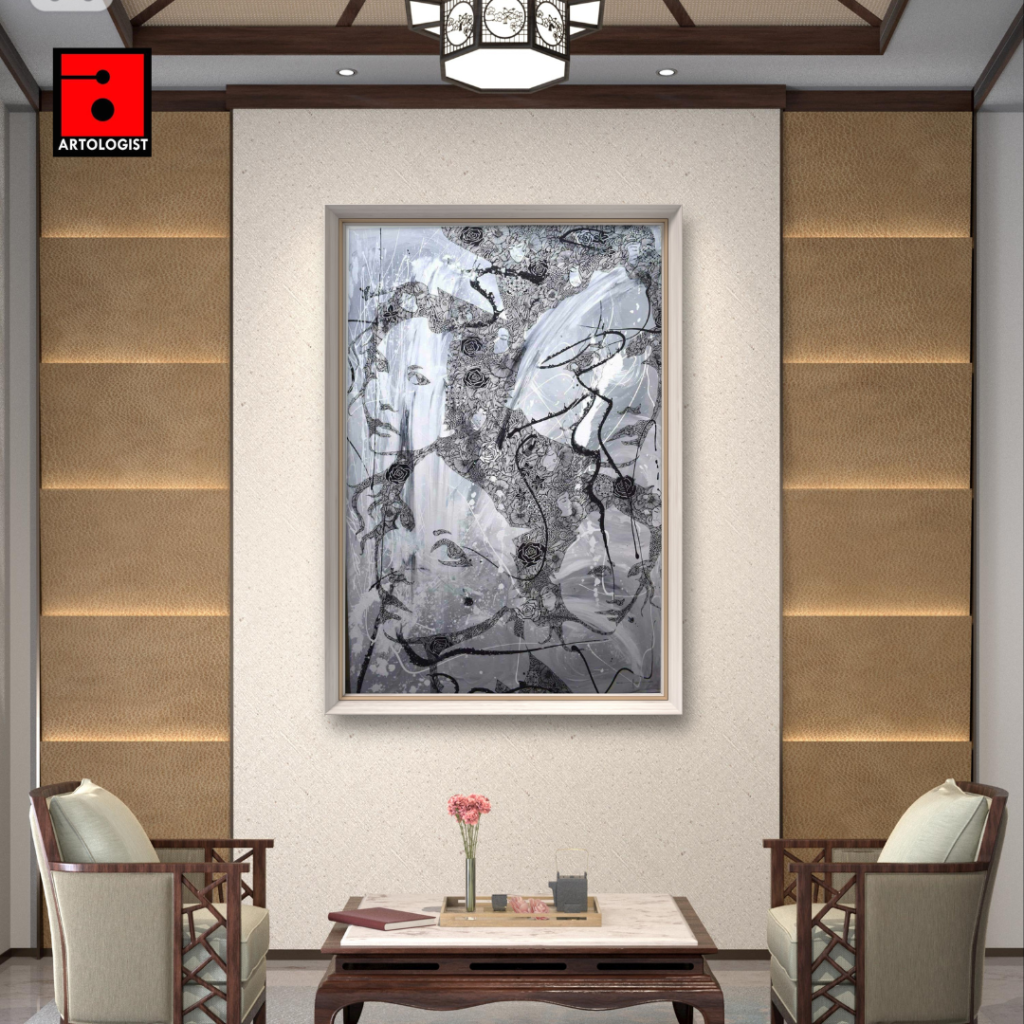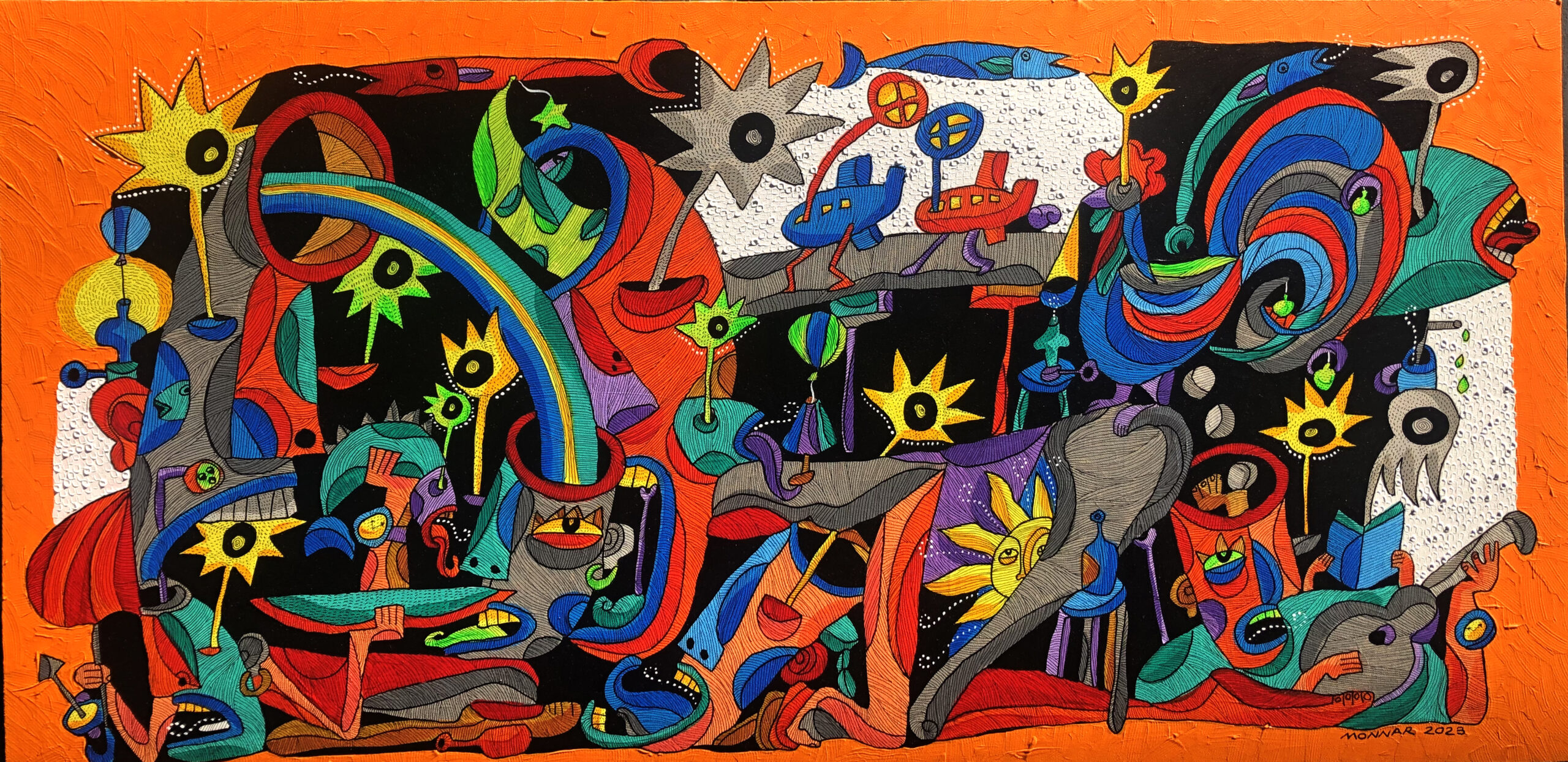
Monnar Baldemor is an adept and prolific artist much like his father Manuel. Quickly amassing a body of work, Monnar’s first exhibition was of pen-and-ink creations that he painstakingly rendered on bright, pastel-colored backgrounds. This penchant for the use of bright hues is probably the only quality Monnar’s paintings shares with the elder Baldemor. Thematically, Monnar often delves in the darker side – social, economic, and political ills that bedevil society. This preoccupation in plumbing the depths of emotion saw Monnar come up with stark images more akin to a meeting of Picasso and Degasperi. The anatomical distortions and abstract forms of this earlier period also call to mind Hieronymus Bosch’s disturbing renderings. Set against the aforementioned pastel hues and backgrounds, the irony is visually arresting.
“Abstractions have long fascinated me. How do we represent the intangible ideas in the tangible painting or artwork – abstractions such as industry, jealousy, intimacy, happiness, despair, family? It’s not like a photograph representing things we can touch and see for ourselves. A painting and what it stands for (even if an idea) is no less real,” Monnar says.
“Awareness is a concept I want to put forth a lot. The open eyes in my paintings represent this, as well as the idea that we should be sensitive to, and aware of, everything – not just physical things. These eyes of consciousness jut out from everywhere in a perpetual eureka moment.
“Still, there are eyes that, even when open, fail to see the truth. Light bulbs, also a recurring object in my creations, are a popular symbol of ideas, resourcefulness, and application of genius or creativity to a problem or issue. Sadly, we have too little of this going on, so we trundle on with daily life unmindful of our role and responsibility for problems – tra1c, ecological crisis, intrigue, apathy. We accept until things become unacceptable. I paint clocks to remind us that time is a nite resource not to be taken lightly or wasted. If my paintings could have a sound, it would be a persistent, distressing ticking of a clock. Tick-tock-tick-tock.
“Still, hope is a gift that we should always welcome. It will remain ripe, ever-ready for the picking. Fruits, with their intrinsic goodness in sweetness and healthfulness, offer the perfect metaphor for grasping the concept of positivity. After all, it’s not too late until it’s too late. The trick is in not waiting to find out just when it is.”
Monnar has earned five Jurors’ Choice nods in the prestigious yearly art tilt of the Artist Association of the Philippines. He was also chosen one of the 50 finalists in the Phillip Morris Group of Companies Philippine Art Awards.
